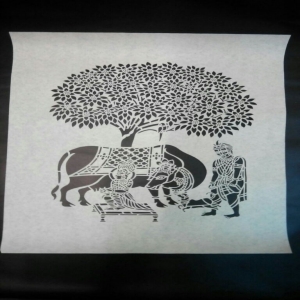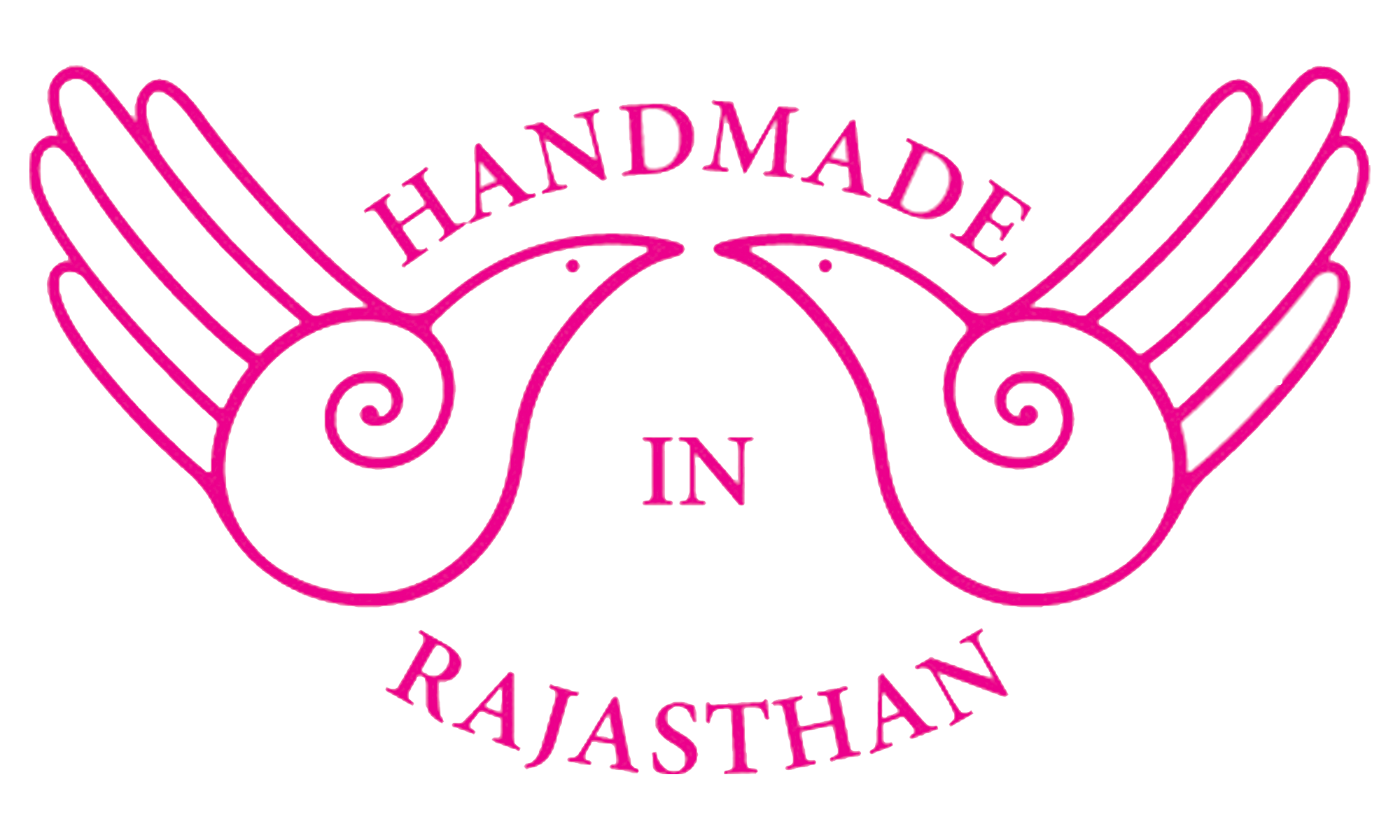- Home
- About US
- Art and Craft
- Artisans
- Master Crafts Persons
- Supporting Institutions
- News and Events
- Schemes
- Contact us
- Contact

Sanjhi Painting is a tradition of art that originated out of the cult of Krishna and flourished in the north Indian state of Uttar Pradesh. It is in Vraja, or Vrindavan, the homeland of Lord Sri Krishna, that this art of Sanjhi painting reached its pinnacle.
This art painting is rooted in the folk culture of the region. It was taken to its glory by the Vaishnava temples in the 15 th and 16 th century. Sanjhi came to be regarded as a highly refined art form practiced by the Brahmin priests. Presently, the art of Sanjhi painting is practiced by only a select few and remains a living tradition only in some of the temples of India. One of these temples where Sanjhi painting still survives is the Radharamana temple of Vrindavan. According to mythology,
Radha, Krishna's beloved, used to paint her walls with Sanjhi art to attract her beloved's attention. She used colored stones, metal foils and flowers to paint her freshly plastered cow dung walls. Seeing her, other Gopis of Vrindavan also started painting walls with Sanjhi art to attract Krishna. 'Sanjhi' is a word derived from words like "Sajja', "Shringar' and "Sajavat" which all means 'decoration'. Sanjhi paintings are made at a particular time in the year for the pleasure of Krishna's eyes.
In today's Hands of Grace article, we take a look at Saanjhi Paper Art, a traditional form of stenciled paper cutting, that serves as a conduit of expression for artists’ devotion to Krishna.
Sanjhi Art from Mathura, is a truly unique craft form that features exquisite designs and intricate picture motifs, cut into paper. Craftsmen use specially designed scissors to accomplish this process. Let’s take a look at the history and current state of this artform
Folklore tells us that the origins of this art form lie with Radhe, who made Sanjhirangolis using natural colors, along with flowers, leaves and colored stones, to woo Krishna. The other gopis soon followed suit, also making intricate designs to impress Krishna. Sanjhi has been popular ever since, and during the Mughal period, contemporary themes were introduced for greater perspective. Today, Sanjhi art is found in many homes and spaces. It has been displayed in Delhi metro stations and was recently used for pictograms during the Commonwealth Games
To create a Sanjhi design, stencils are made on paper (mostly handmade) using specially designed scissors. These stencils areplaced on flat surfaces or water, where the rangoli has to be drawn. Dry colors are then sifted onto the surface. Filling the colors and lifting the stencils are as critical as cutting the design. Peacocks, bullock carts, horses, cows, butterflies and trees are some of the common motifs used. The intricate craftsmanship reflects the artist’s devotion and the intimate love for the Blue God. To produce an elaborate Sanjhi design could take anywhere between an hour and a month.

